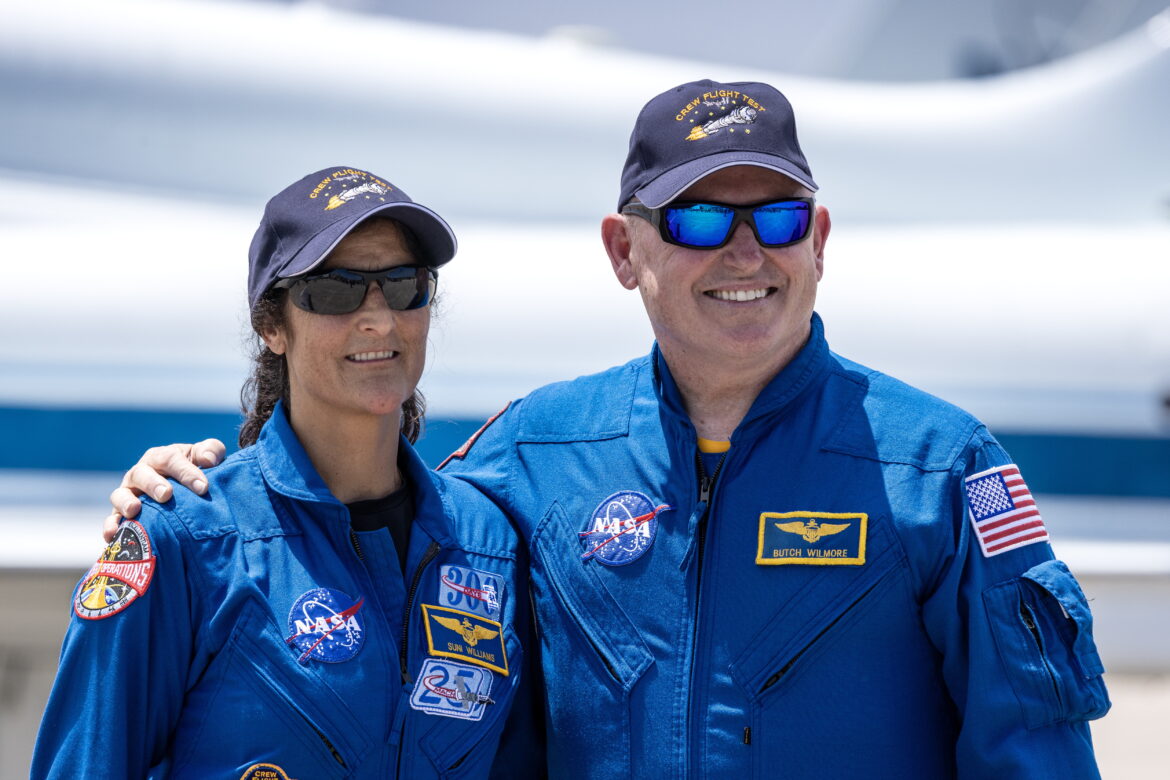By Staff Reporters
Dubai: Dr Shareef Al Romaithi, an Emirati pilot selected as the first UAE crew member for NASA’s simulated Mars journey for 45 days, is all set to embark on the mission in Houston, US, on Friday.
Dr Al Romaithi will step into the US space agency’s Human Exploration Research Analog, or HERA, proudly carrying the UAE flag and his family pictures, including that of his three little daughters whom he said he is going to miss the most.
HERA is a unique 650-square-feet habitat split among two floors and a loft, designed to serve as an analog for isolation, confinement, and remote conditions in exploration scenarios.
The world’s youngest and eighth graduate to attain a doctorate in aviation, Dr Al Romaithi is taking part in the second analog study of the UAE Analog Programme by the Mohammed Bin Rashid Space Centre (MBRSC).
Addressing a virtual media roundtable with select UAE journalists on Thursday, Dr Al Romaithi said he was mentally and physically prepared for the mission.
For him, the preparation for the mission began over 20 years ago with his aerospace engineering degree and subsequent academic certifications.
“All of them provided me with the foundation that is required to be ready for such a mission,” he said.
Prior to the mission, he said he adhered to a strict diet and consistent exercise programmes to make sure that he was physically and mentally ready.
Tackling challenges
Talking about the challenges, he pointed out that there are numerous psychological issues associated with long-term isolation and confinement that can present significant challenges.
“And to mitigate this, it’s crucial to maintain positive relationships with the rest of the crew and this will ensure effective communication, foster a supportive environment and enhance the overall resilience of the team, making it possible to handle the stresses and strains of the mission more effectively, and allow us to complete the entirety of the 45 days successfully.”
As a pilot, he said spending extended periods in the relatively confined space of the flight deck during long flights, such as those to North America and Australia, and working in a diverse team, often consisting of members from eight to 10 different nationalities, have helped him prepare for this mission. He hoped that his PhD would help him significantly with this mission, especially because it focused on addressing the cultural impact on performance and teamwork.
Schedule, activities
He explained that the daily schedule onboard HERA from 7am to 11pm includes medical studies, virtual walks on Mars, exercise, and group activities with no weekly day off. “And of course, there will be unscheduled emergency events that we would have to deal with to ensure the success of the mission,” he pointed out.
Aboard HERA, there are four bunks and minimal privacy with the only door to the airlock. Different sections cater to specific activities like medical studies, virtual Mars walks, and exercise. During downtime, crew members engage in various activities such as exercising, reading, or playing board games together, Dr Al Romaithi explained.
‘Walking on Mars’
His favourite experiments during the mission include conducting virtual walks on Mars and utilising artificial intelligence (AI) for maintenance activities.
While Dr Al Romaithi and another crew member have been chosen for the virtual walks on Mars, the other two remaining crew members will operate drones.
He said the tasks include maintaining habitat integrity, collecting rock samples and surveying the area. Crew members in each group are designated separate sections onboard HERA, facilitating communication via onboard systems and with Mission Control in Houston.
“I really like it [virtual walk on Mars] because it gives me the opportunity to interact with my crew members, just like astronauts in space would do in terms of communicating with each other and in terms of planning and coordinating mission objectives with Mission Control Centre here in Houston,” he said.
In his second favourite study involving using AI for maintenance activities, crew members wear virtual goggles to receive step-by-step instructions for conducting maintenance tasks related to the habitat and onboard hardware components.
Al Romaithi hopes this mission will launch a career in space exploration, fulfilling his lifelong passion and contributing to the UAE’s growing space sector.
More crew to join
Dr Adnan Al Rais, assistant director general, Space Operations and Exploration Sector at MBRSC, said the UAE Analog Programme aims to advance science and technology for long-term space travel, particularly towards Mars exploration.
He said MBRSC is looking for more UAE crew members to join the third and fourth phases of HERA Campaign. “And we definitely hope to see female analog crew members from the UAE participating and future HERA missions,” said Al Rais.
Dr Al Romaithi is joining the primary crew alongside Jason Lee, Stephanie Navarro, and Piyumi Wijesekara inside HERA habitat at NASA’s Johnson Space Centre in Houston, Texas. Once inside, the team will live and work within the facility for 45 days, before exiting on June 24.
The analog study, comprising four phases, includes 18 human health studies being conducted here on Earth, designed to understand the physiological, behavioural, and psychological responses of crew members in conditions akin to those they would encounter on long duration space missions.
Significantly contributing to this international effort, the United Arab Emirates University (UAEU), Mohammed Bin Rashid University of Medicine and Health Sciences (MBRU), and American University of Sharjah (AUS) are leading six critical studies, in collaboration with MBRSC, highlighting the UAE’s pivotal role in advancing human space exploration.


